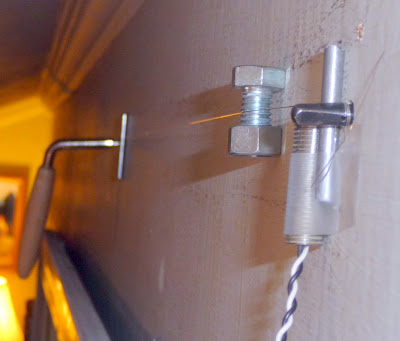This one is done for now. It’s based on a scale I used on my 12 note finger piano:
- 7:7
- 8:7
- 9:7
- 10:7
- 21:14
- 12:7
- 27:14
- 28:14
It has a very large 1st and 5th steps: 8:7, and two very small steps: 10:7 to 21:14 is only 21:20, and the step from 27:14 to 28:14 is only 28:27. It makes for some nice melodic passages, and trills can vary from as small as 28:27 to 8:7. Lots of variety is available. These are the only 7 pitches in the piece – I don’t modulate to any other key but C. The slides of course hit other tones, but the start and end tones are all one of those seven pitches. If someone recognizes the scale, let me know so I can give credit to the inventor.
The instrumentation is Alto Flute, finger piano bass, long and short .024″ music wire strings with the pickup as close as possible to the bridge, oboe, balloon drums, and tube drums.
As with all my music, there is a great deal of indeterminacy. Each instrument has lots of choices about what it will play at each moment, based on different randomization algorithms. Sometimes it tries to repeat itself, and sometimes it tries to chose something it hasn’t chosen lately. The format starts with a bridge, then a melody, then variations. It repeats that structure four times.
Here’s a picture of the bench I used to make the long string samples. The longest is about 18 feet long, and the shortest just a few inches for the very high notes. The location is a wall in my office made of a glulam beam composed of six four by sixes laminated together. It’s very solid and helps the samples sustain so long (up to 20 seconds for the long ones.) The less the instrument vibrates, the longer the sustain.
or download this link

